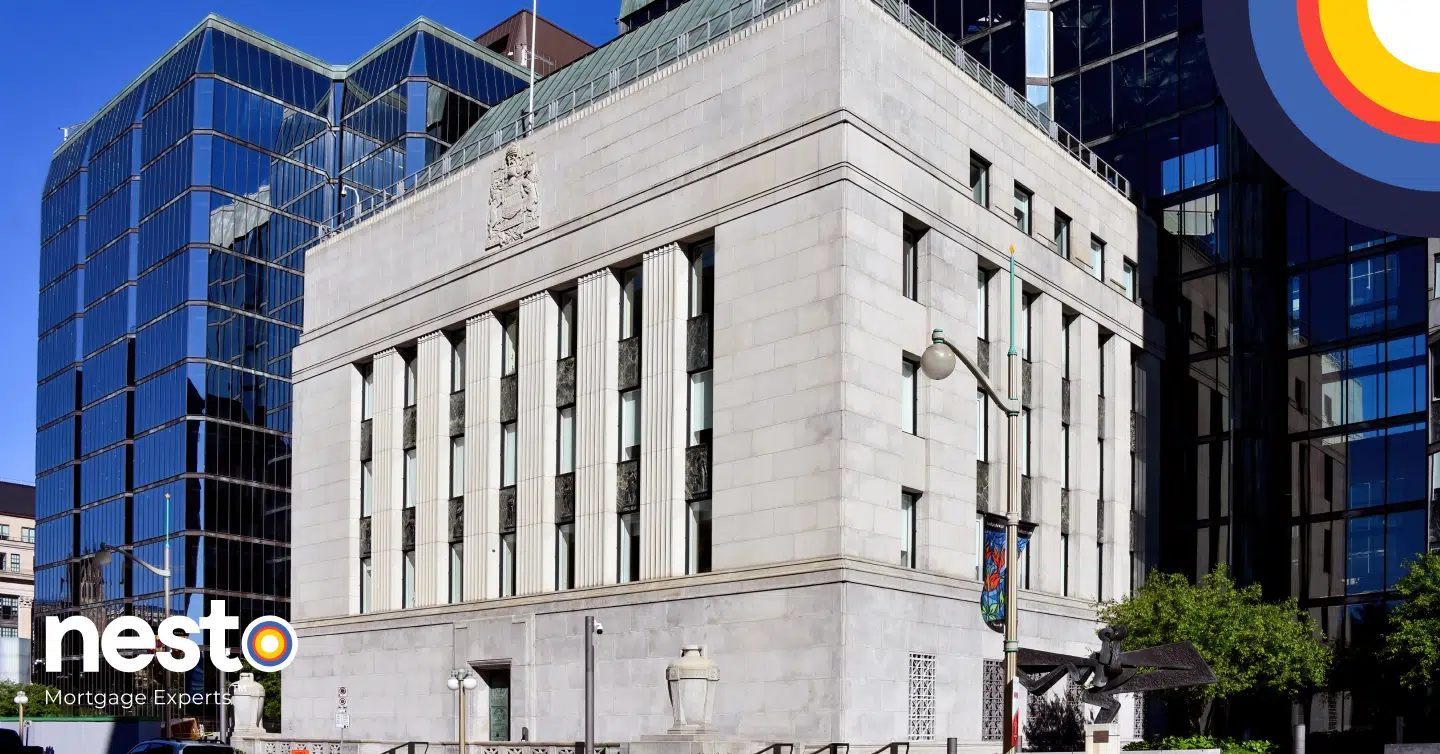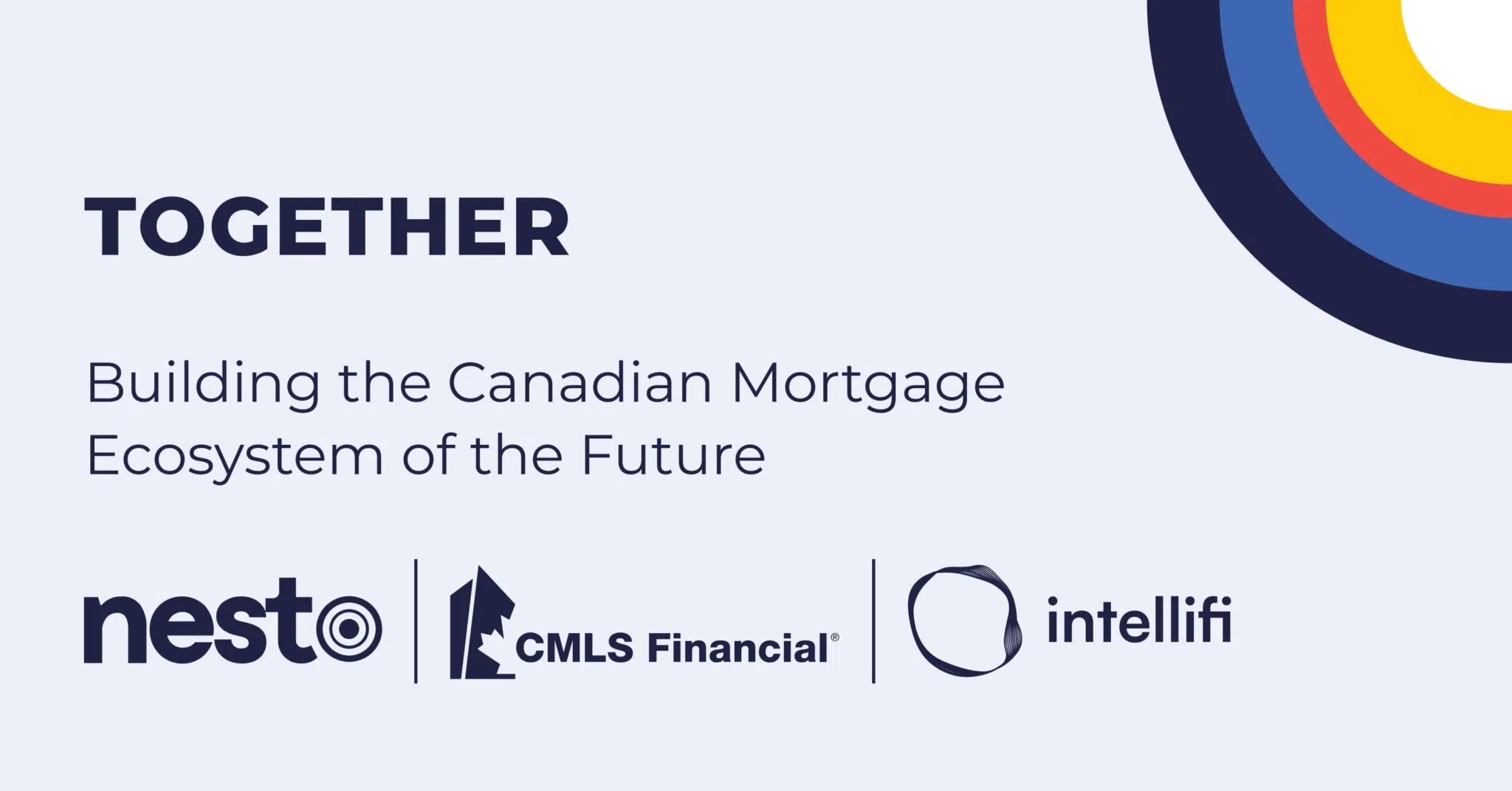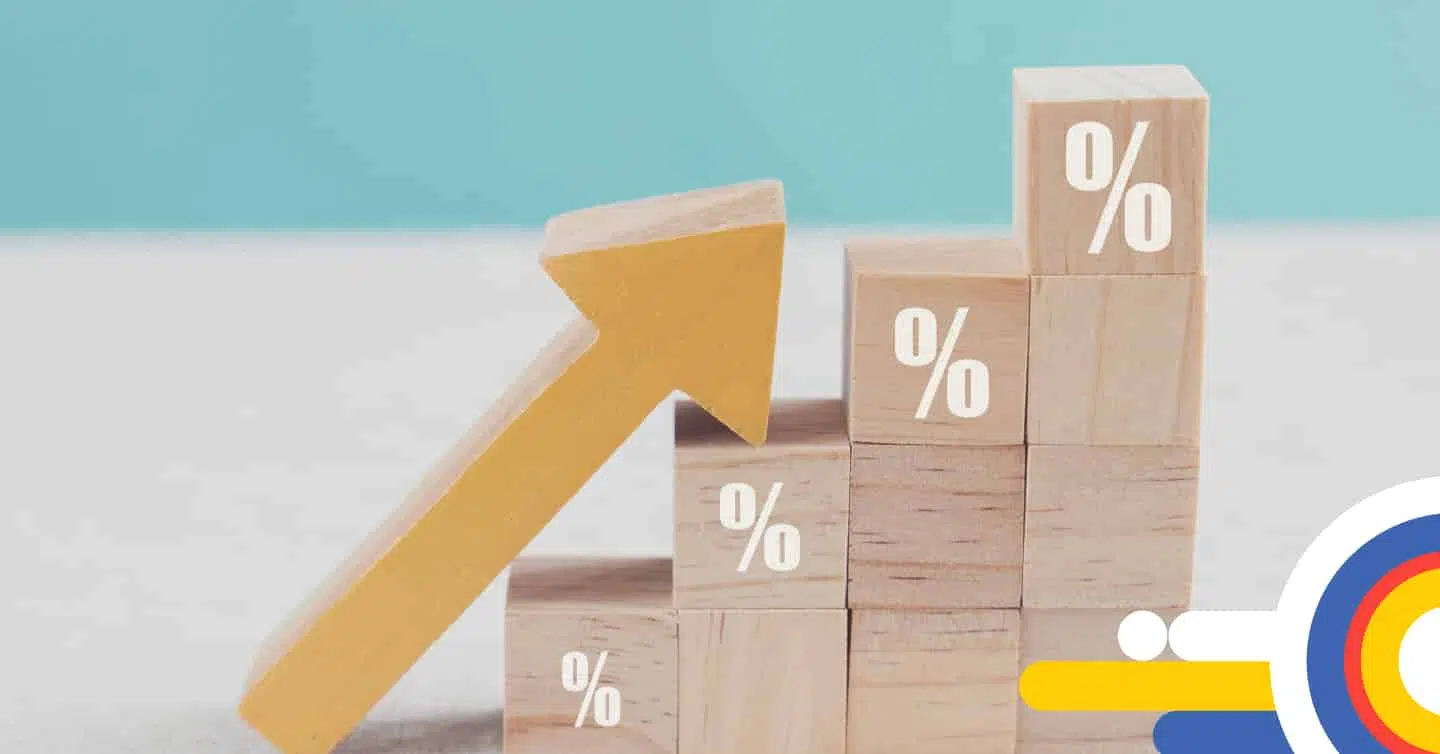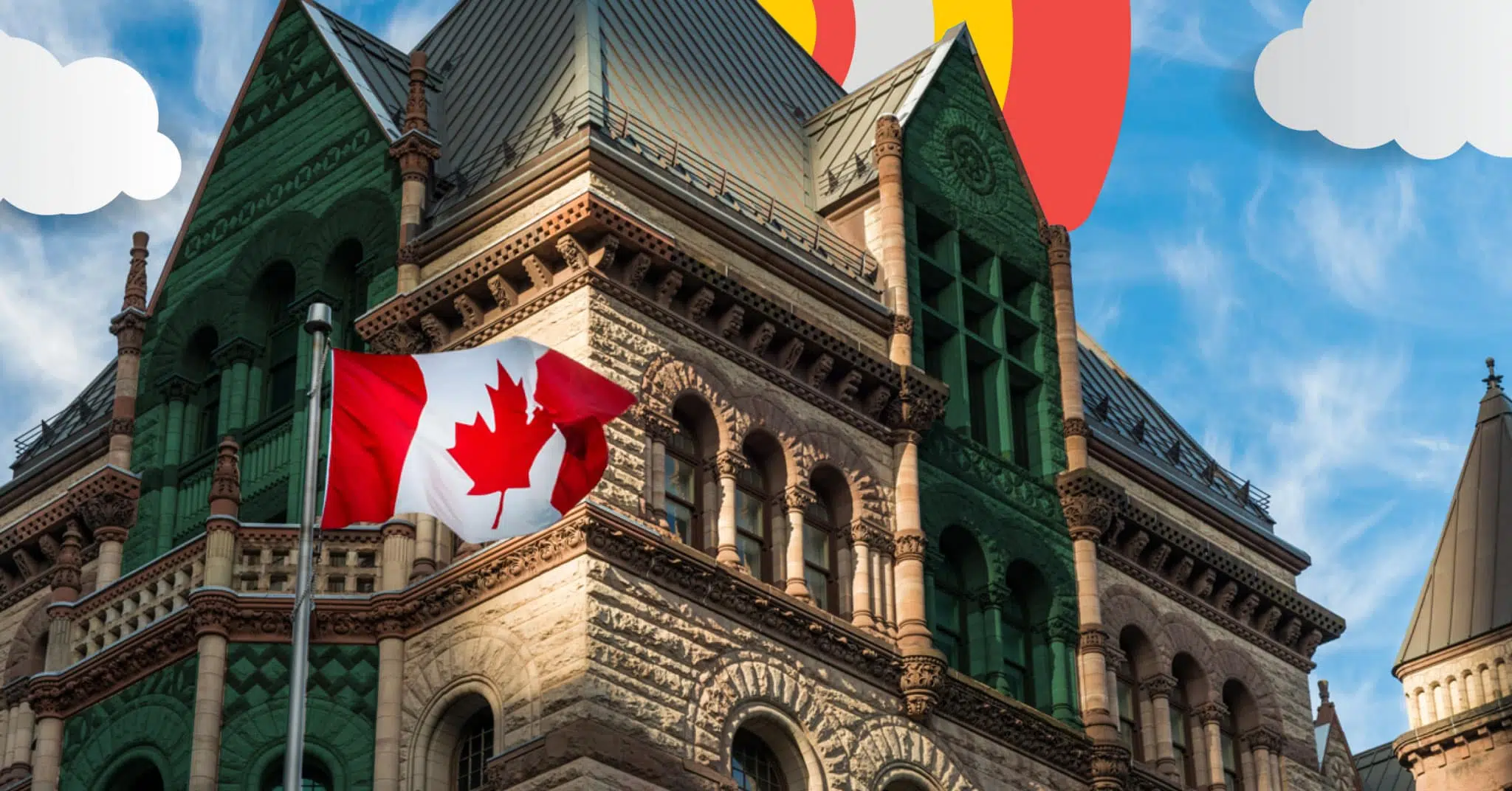Mortgage Basics #Guides #Industry News
Mortgage Basics #Guides #Industry News
Mortgage Rates Forecast Canada 2025-2029

Table of contents
The Bank of Canada’s (BoC) most recent announcement, made on June 4, 2025, was a rate hold, keeping the policy rate at 2.75%. The effects of rate increases can take up to 4 to 6 fiscal quarters (or 12 to 18 months) to be felt throughout the entire economy.
Approximately 60% of all outstanding mortgages are due to renew within the next two years. Many of these borrowers will renew for the first time since interest rates increased in 2022, which means that most borrowers will likely see a significant increase in mortgage payments.
Key Takeaways
- The prime rate is currently 4.95%.
- Inflation in Canada is currently 1.7%.
- Interest rates are decreasing, with more rate cuts forecasted for the coming months.
What Is the Mortgage Rate Forecast For Canada in 2025? (Updated June 2025)
The mortgage rate forecast for Canada predicts that rates will decrease in the new year. Early predictions from some of the Big 6 Banks suggest that we could see rates decrease by as much as 75 basis points in 2025.
However, rate cuts in 2025 are predicted to be gradual, with a reduction of 25 basis points in future announcements. These predictions are always subject to change depending on geopolitical and macroeconomic conditions.
| Bank | Policy Rate Q2 | Policy Rate Q3 | Policy Rate Q4 |
|---|---|---|---|
| BMO | 2.50% | 2.25% | 2.00% |
| CIBC | 2.50% | 2.25% | 2.25% |
| National Bank | 2.50% | 2.25% | 2.00% |
| RBC | 2.25% | 2.25% | 2.25% |
| Scotiabank | 2.75% | 2.75% | 2.75% |
| TD | 2.50% | 2.25% | 2.25% |
Will Interest Rates Go Down in 2025? (June 2025)
The Bank of Canada’s policy rate decreased by 175 basis points (1 basis point equals 0.01%) in 2024. So far, a range of predictions from the Big 6 Banks in Canada indicates that interest rates will continue to decrease gradually in the new year. Early predictions suggest that rates may decrease to 2.25%.
Will There Be a Bank of Canada Rate Hike in 2025? (June 2025)
It seems unlikely that interest rates will increase anytime soon. Most experts predict that we will continue to see rate cuts in 2025. The Bank of Canada Governing Council has agreed that monetary policy no longer needs to be restrictive. They are now focused on supporting growth and keeping inflation close to the middle of their target range of 1% to 3%.
Top Economist’s Mortgage Predictions for 2025
The Bank of Canada’s (BoC) latest Market Participant Survey, which gathers and publishes the views of senior economists and strategists in the Canadian financial market, forecasts that another 25 basis point rate cut could be announced at the June 4th meeting.
Results from the most recent survey for Q1 2025 suggest we may see only 2 more rate cuts in 2025. Rates are predicted to decrease by 25 basis points at the June and July announcements before remaining steady at 2.25% for the remainder of the year.
| Bank of Canada Monetary Policy Announcement Date | Policy Interest Rate (%) (expectations based on median response) |
|---|---|
| June | 2.50 |
| July | 2.25 |
| September | 2.25 |
| October | 2.25 |
| December | 2.25 |
nesto’s Interest Rate Forecast for Canada 2025
| Policy Rate | |
|---|---|
| Q1 2025 | 2.75% |
| Q2 2025 | 2.50% |
| Q3 2025 | 2.25% |
| Q4 2025 | 2.00% |
July 2025 Canada Mortgage Rates Forecast
The next Bank of Canada rate announcement is scheduled for July 30th. Some market predictions suggest that the rate could decrease with this announcement. Depending on global economic uncertainties, inflation, GDP, and employment data released before the announcement, the Bank may decide to decrease the key rate by 25 basis points.
If economic uncertainties due to tariffs continue to impact consumer and business spending decisions, the BoC may focus on this as the basis for monetary policy decisions in 2025. Tariffs could have a significant impact on our economy, potentially leading to a recession.
Long-Term Mortgage Rates Forecast
The economy continues to feel the effects of the interest rate increases implemented in 2022. It typically takes up to 24 months for rate increases to be felt throughout the economy. In past rate-tightening cycles, the Bank has achieved its goal of controlling inflation within 12 to 18 months. However, this cycle is proving more challenging for the Bank of Canada and most other central banks of advanced economies.
The impact of interest rate increases was felt throughout the housing market as sales volumes decreased in 2024. Home sales are expected to rebound in 2025 and 2026 as interest rates continue to decline and strong population growth drives sales.
Canada’s economy is expected to grow by an average of 2.25% between 2025 and 2026 as decreases in interest rates boost consumer spending and business investments. Inflation is predicted to remain around the 2% target.
Experts predict we will likely see gradual 25-basis-point cuts throughout 2025. Rate holds are also possible, as the BoC has signalled that it is likely to take a gradual approach to cuts going forward.
Bank of Canada Interest Rate Hike Predictions for 2025
Inflation has finally fallen and remains around the 2% target. Rising shelter costs remain one of the country’s primary drivers of inflation.
Could another Bank of Canada (BoC) rate hike occur? Interest rate hikes in Canada are not currently forecasted; however, predictions should be viewed as speculation based on available information. Rates are subject to change due to economic developments and the availability of new information. Predictions indicate that interest rates are likely to decrease further in 2025.
Bank of Canada 2025 Rate Change Schedule
| Date | BoC Rate Announcement Decision (%) | Target Rate |
|---|---|---|
| January 29 | -0.25 | 3.00% |
| March 12 | -0.25 | 2.75% |
| April 16 | No Change | 2.75% |
| June 4 | No Change | 2.75% |
| July 30 | TBD | TBD |
| September 17 | TBD | TBD |
| October 29 | TBD | TBD |
| December 10 | TBD | TBD |
Bank of Canada 2024 Rate Change Schedule
| Date | BoC Rate Announcement Decision (%) | Target Rate |
|---|---|---|
| January 24 | No Change | 5.00% |
| March 6 | No Change | 5.00% |
| April 10 | No Change | 5.00% |
| June 5 | -0.25 | 4.75% |
| July 24 | -0.25 | 4.50% |
| September 4 | -0.25 | 4.25% |
| October 23 | -0.50 | 3.75% |
| December 11 | -0.50 | 3.25% |
What Affects Future Bank of Canada Rate Decisions?
Inflation
The most recent inflation data show a 1.7% year-over-year rise in May, matching the 1.7% increase in April. This was due to smaller price increases for rent and a decline in travel tours, which put downward pressure on the CPI this month. Smaller declines for gas and cellular services put upward pressure on CPI.
Inflation is the most important driving factor behind the BoC’s rate decisions. To achieve its 2% inflation target, the BoC must adjust its policy interest rates to control inflation.
When inflation rises above this target, the Bank of Canada (BoC) increases the policy rate. In turn, commercial banks and lenders raise their prime rates, which directly affect loans and mortgages. This discourages borrowing and spending, helping the BoC’s efforts to bring inflation back to its target of 2%.
If inflation falls below the 2% target, the BoC might lower the policy interest rate to stimulate the economy. Lenders, in turn, decrease their prime rates to encourage borrowing and spending.
Consumer Price Index (CPI) Release Dates 2025
| Date | CPI Index (Year-over-Year Change) |
|---|---|
| January 21 | +1.8% |
| February 18 | +1.9% |
| March 18 | +2.6% |
| April 15 | +2.3% |
| May 20 | +1.7% |
| June 24 | +1.7% |
| July 15 | TBD |
| August 19 | TBD |
| September 16 | TBD |
| October 21 | TBD |
| November 17 | TBD |
| December 15 | TBD |
Consumer Price Index (CPI) Release Dates 2024
| Date | CPI Index (Year-over-Year Change) |
|---|---|
| January 16 | + 3.4% |
| February 20 | + 2.9% |
| March 19 | +2.8% |
| April 16 | +2.9% |
| May 21 | +2.7% |
| June 25 | +2.9% |
| July 16 | +2.7% |
| August 20 | +2.5% |
| September 17 | +2.0% |
| October 15 | +1.6% |
| November 19 | +2.0% |
| December 17 | +1.9% |
Employment
Statistics Canada’s Labour Force Survey data highlights that employment in May was relatively unchanged (+8,800). The employment rate, which is the proportion of people aged 15 and above who are employed, remained steady at 60.8%. The unemployment rate increased 0.1% to 7.0%.
Employment fell 0.4% in Quebec (-17,000), 0.8% in Manitoba (-5,800), and 2.9% in Prince Edward Island (-2,700) while increasing 0.4% in British Columbia (+13,000), 2.1% in Nova Scotia (+11,000), and 1.9% in New Brunswick (+7,600). Employment remained little changed in other provinces.
The number of unemployed individuals in May stands at 1.6 million, representing an increase of 13.8% (+191,000) compared to the same period a year earlier. The unemployment rate, at 7.0%, is the highest since September 2016, excluding the pandemic years of 2020 and 2021. This also marks the third consecutive monthly increase since February this year.
Those unemployed continue to face greater difficulty finding work than they did a year earlier. Of those unemployed in April, only 22.6% transitioned to employment in May. The average duration searching for work has increased to 21.8 weeks, up from 18.4 weeks in May 2024. 46.5% of those unemployed in May have not worked in the previous 12 months or had never worked.
BoC rate decisions aim to support maximum sustainable employment levels while maintaining output growth by keeping inflation predictable and stable, while stimulating the economy. For the economy to maintain inflation at the 2% target, it needs to maintain its maximum sustainable level of employment. This means the economy operates at its highest productive capacity and can sustain itself without triggering inflation.
When employment falls below the maximum sustainable level, people cannot find work and their earnings and savings decline. This affects spending habits, pushing inflation lower, possibly below the 2% target. When employment exceeds this level, employers struggle to find enough workers to meet demand, which drives prices and wages higher and increases inflation. Finding the perfect balance between inflation and the employment rate is challenging, as both are measured using data gathered from the previous month, rather than in real-time.
The US Economy
The latest from the Bureau of Labor Statistics shows that the U.S. CPI increased 0.1% in May after rising 0.2% in April. The index for shelter rose 0.3%, while the all-items index increased to 2.4%.
Following the release of CPI data, the US bond futures market is pricing in the probability of the Fed holding rates at its June 18th meeting.
Historical Context: What Does a Slowing Economy Typically Mean for Mortgage Rates?
The COVID-19 shutdown of the economy and supply chains increased the demand for much-needed supplies. Our demand outstripped supply, driven by lower interest rates and more significant cash flows, which created high inflation. Since inflation is a lagging indicator, and Statistics Canada measures inflation differently for resales of existing homes, it became apparent that inflation was quickly running rampant. As a result, the BoC began to ramp up the benchmark key policy interest rate to curb inflation quickly.
Source: bankofcanada.ca
What’s different about these rate increases in previous inflationary cycles? In the 1980s, we did not have the same level of debt. Today, Americans make $1 for every $1 of debt, while Canadians make $1 for every $1.65 of debt. North Americans were not as indebted as in the 1980s. Say you had a $100,000 mortgage, and your income on average was around $20,000; the monthly payment on your mortgage was likely less than $845 at 10% if you had a 35-year mortgage or, say, $1,604 if rates increased to 20% on that same mortgage. Credit cards and HELOCs were not used as frequently back then, so mortgage debt was likely the only debt you had.
As rates jumped from 10% to 20%, their interest impact doubled (magnification of 2x). However, the effect may now be much more pronounced. A rate increase from 0.25% to 5.00% on the BoC’s Key Policy Rate means a magnification of 19x on the interest component of your mortgage payment. That means on a 25-year mortgage, your $100,000 mortgage’s monthly payment would jump from $436 to $716. The big difference between 2024 and 1982 is that we no longer have 35-year prime mortgages with average house prices near $72,800 and average mortgage balance hovering around $41,200.
Navigating High-Interest Rates to Save Money on Your Mortgage
As the full effects of past interest rate hikes are felt, consumer demand has been impacted. Mortgage rates are projected to continue decreasing; however, possible upticks in bond yields can occur despite longer-term declines.
A large number of mortgages are set to come up for renewal in 2025, with approximately 1.2 million mortgages expected to renew. Many of these mortgages (85%) were obtained when the BoC rate was at or below 1%, meaning these borrowers will face significantly higher interest rates at renewal.
Those who are part of the 85% of mortgages with low rates need to plan for this mortgage renewal payment shock in Canada. Payment shock could further restrict household budgets and inadvertently cause a further decline in fixed rates. The best way to save money on your mortgage is to choose a term and rate type that aligns with your financial situation and future plans.
Advice for Borrowers to Select and Save on Their Mortgage in 2025
1. Focus on Your Financial Stability
In 2025, with economic uncertainty at high levels, selecting the right mortgage should be based on your financial stability rather than unpredictable rate forecasts. Key factors include job security, debt levels, and savings. If your income is steady and you have enough savings to weather unexpected expenses, a variable-rate mortgage might allow you to benefit from potential rate cuts. On the other hand, if financial stability or predictability is more important to you, a fixed-rate mortgage offers payment consistency, shielding you from potential rate spikes.
2. Match Your Term to Your Future Plans
Instead of relying solely on rate outlooks, focus on your personal five-year plan when choosing a mortgage. If you anticipate changes like moving, starting a family or requiring additional financing, a shorter fixed term can provide stability now while keeping your options open for refinancing at potentially lower rates later. If you’re comfortable with some payment variability and can budget for short-term increases, a variable rate could lead to savings as rates decline.
Utilizing Fixed-Rate Mortgages to Reduce Interest Rate Risk
Conventional wisdom suggests locking yourself into a fixed-rate mortgage at the first sign of rate hikes. However, if inflation is a lagging indicator and bond yields are a leading factor, then waiting for the right moment to lock in may be the most suitable approach. Fixed rates are influenced by bond yields, which typically respond to market expectations of inflation and interest rate trends. Fixed-rate mortgages offer stability and predictable payments.
A calculated method is to position yourself to take advantage of lower rates. This is the best option for anyone navigating this tumultuous rate environment. Shorter fixed terms allow flexibility to benefit from potential rate declines as inflation eases.
Utilizing Variable-Rate Mortgages to Reduce Interest Rate Risk
Variable-rate mortgages (VRMs) and adjustable-rate mortgages (ARMs) can be cost-effective options for borrowers prepared for some payment fluctuation. Since variable rates are tied to the Bank of Canada’s (BoC) policy rate, they adjust in response to changes in the lender’s prime rate. ARMs may offer quicker savings in a decreasing rate environment as payments adjust more dynamically than traditional VRMs.
For well-qualified borrowers, ARMs can outperform VRMs when rates drop, providing immediate relief on monthly payments. This flexibility is especially valuable as households face tighter financial conditions. If you’re comfortable with some payment uncertainty and have room in your budget, choosing an ARM can help you capitalize on future rate reductions while maintaining a stable overall financial position.
Mortgage Rates Forecast for Buyers and Sellers in 2025 (Updated June 2025)
It’s probably best not to have specific expectations from the economy. Even the experts continue to miss the mark on predictions, making long-term forecasting even more challenging.
While the policy rate now sits at the top of the neutral range (2.25% to 3.25%), the Governing Council will likely take a cautious approach to rate cuts in 2025. Experts predict that we will see gradual reductions to the policy rate, with 25-basis-point cuts at each announcement, until it reaches 2.50%.
As rates fall, uncertainty or the fear of buying too early could leave homebuyers on the sidelines for too long. Home prices are already showing signs of a rebound as rates decrease, and the cost of purchasing may soon be significantly higher. This could leave you with less savings to weather prolonged inflationary pressures.
Purchasing a home before prices rebound means using part of the cash savings from buying today, while home prices are lower, to help manage higher interest rates and monthly payments during your initial term. A higher rate now means higher monthly payments and a higher income to qualify. However, if you qualify, this may result in lower interest-carrying costs overall for the life of your mortgage.
If you want to sell and have more than 50% equity and a healthy cash flow, deferring your decision for a year or two with a shorter-term or variable rate option until house prices bounce back will make the most sense. However, keep in mind that nothing is certain, and homes may not return to 2021 levels; they were inflated in some coveted urban regional markets.
Bank of Canada Monetary Policy Forecast 2025
Core inflation, measured by CPI-trim and CPI-median, is the measure the Bank of Canada relies on when making policy rate decisions. These figures are expected to ease, returning to 2% in the second half of 2025.
With the core measures of inflation at the 2% target, the BoC will likely continue to reduce rates until they fall within the neutral rate range of 2.25% to 3.25%. The neutral rate is the policy rate that allows monetary policy to maintain the economy without stimulating or slowing it down.
Mortgage Rate Predictions 2026-2029 (Updated June 2025)
While it’s almost impossible to predict where interest rates are headed, most economists agree that we will likely see a more gradual reduction now that inflation appears to be under control.
One thing that remains certain is that there is an endemic shortage of homes, which will continue to put upward pressure on inflation, especially if consumers cannot afford to buy homes and instead choose to spend their money on other things.
The impact of higher interest rates will begin to affect more households in the next few years as those who took out mortgages with lower interest rates in 2020 and 2021 come up for renewal in 2025-2026.
Canada Interest Rate Forecast 2026
| Bank | Policy Rate Q1 2026 | Policy Rate Q2 2026 | Policy Rate Q3 2026 | Policy Rate Q4 2026 |
|---|---|---|---|---|
| BMO | 2.00% | 2.00% | 2.00% | 2.00% |
| CIBC | 2.25% | 2.25% | 2.25% | 2.25% |
| National Bank | – | – | – | 2.50% |
| RBC | 2.25% | 2.25% | 2.25% | 2.50% |
| Scotiabank | 2.50% | 2.25% | 2.00% | 2.00% |
| TD | 2.25% | 2.25% | 2.25% | 2.25% |
Bank of Canada Market Participants Survey Quarterly Forecast 2026-2027
The Bank of Canada’s forecast extends to 2026 and 2027, providing an outlook for what we may expect from interest rates in the future.
| 2026 |
Policy Interest Rate (%) (expectations based on median response) |
|---|---|
| January | 2.13 |
| March | 2.13 |
| Q2 | 2.00 |
| Q3 | 2.13 |
| Q4 | 2.13 |
| 2027 |
Policy Interest Rate (%) (expectations based on median response) |
|---|---|
| Q1 | 2.25 |
| Q2 | 2.50 |
nesto’s Interest Rate Forecast for Canada 2026-2029
| Policy Rate (%) | |
|---|---|
| Q1 2026 | 2.00 |
| Q2 2026 | 2.00 |
| Q3 2026 | 2.00 |
| Q4 2026 | 2.00 |
| Q1 2027 | 2.00 |
| Q2 2027 | 2.00 |
| Q3 2027 | 2.00 |
| Q4 2027 | 1.75 |
| Q1 2028 | 1.75 |
| Q2 2028 | 1.75 |
| Q3 2028 | 2.00 |
| Q4 2028 | 2.25 |
| Q1 2029 | 2.50 |
| Q2 2029 | 2.50 |
| Q3 2029 | 2.50 |
| Q4 2029 | 2.50 |
Home Shopping Trends
Based on revised sales forecasts from the Canadian Real Estate Association (CREA), economic uncertainty has caused buyers to wait on the sidelines, resulting in sales and prices in some markets falling rather than rebounding as predicted at the beginning of the year. Given the unpredictability surrounding the impact of global economic uncertainty on interest rates and the economy, the forecast is subject to change throughout the year.
Sales are predicted to decline by 0.02% and remain relatively unchanged from 2024. This is an 8.6% decrease adjustment compared to January’s forecast. The average home price is forecasted to decrease annually by 0.3% to $687,898 in 2025, representing a $30,000 decrease compared to January’s forecast.
Ontario and British Columbia are expected to experience a slight decline in average home prices, while other provinces are anticipated to see an increase of 3% to 5% in 2025. The average home price is expected to rise by 1.2% annually to $696,074 in 2026, with 496,487 home sales, resulting in a 2.9% increase.
Frequently Asked Questions
Will mortgage interest rates go down in 2025?
Mortgage rates are expected to decrease in 2025. As interest rates decrease, home prices are likely to increase again; therefore, it is not recommended to time the market if your goal is to become a homeowner in 2025.
How much will interest rates go up in the next 5 years in Canada?
It is challenging to predict precisely how rates will change over the next five years, as numerous domestic and foreign inflationary pressures influence the Bank of Canada’s decision to increase or decrease rates. One of the most significant factors in the long-term inflation battle is the cost of living, which is expected to continue rising as our population grows and ages.
How will my mortgage payment be affected if it comes up for renewal in 2025?
As long as there are no unforeseen geopolitical or macroeconomic events, the BoC is likely to have inflation under control in 2025. However, expect your mortgage payment to be higher than when you booked your mortgage rate. If you booked your rate in 2021, anticipate that your mortgage payment could increase by up to 25%. If you booked your rate in 2020, anticipate your mortgage payment to increase by up to 40%.
Final Thoughts
Mortgage rates will fluctuate as they have since the inception of mortgages. When it comes down to it, it’s not the rate that matters but how much of your disposable income goes to servicing this obligation. Your goal should be to keep your mortgage payments predictable and manageable within your budget, and feasible for the long term, aligning with your financial plans.
When selecting a mortgage strategy, it is crucial to be aware of the associated risks. With this in mind, we recommend consulting with our mortgage experts before making a decision. Our commission-free mortgage experts at nesto will provide honest and transparent advice, guiding you throughout this challenging decision-making process.
Why Choose nesto
At nesto, our commission-free mortgage experts, certified in multiple provinces, provide exceptional advice and service that exceeds industry standards. Our mortgage experts are non-commissioned, salaried employees who provide impartial guidance on mortgage options tailored to your needs and are evaluated based on client satisfaction and advice quality. nesto aims to transform the mortgage industry by providing honest advice and competitive rates using a 100% fully digital, transparent, seamless process.
nesto is on a mission to offer a positive, empowering and transparent property financing experience – simplified from start to finish.
Contact our licensed and knowledgeable mortgage experts to find your best mortgage rate in Canada.
Ready to get started?
In just a few clicks, you can see our current rates. Then apply for your mortgage online in minutes!















